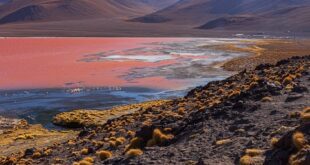The top 10 causes of soil erosion you need to know
Nature’s Forces
Uncontrollable natural forces such as wind, rain, and even floods can cause soil erosion. The force and speed of rainwater or wind carry away layers of the topsoil along slopes, hills, and areas with minimal vegetation.
Loss of Humus
If the soil lacks organic matter or humus, the soil structure weakens and the loose soil particles easily wash away during rain or after strong winds.
Deforestation
Clearing of forests and other vegetation naturally the primary problem area that causes soil erosion. Trees and plants anchor the soil preventing soil compression, while also ensuring filtration of water through their root systems.
Overgrazing
Overgrazing by farm animals or excessive browsing by wild animals can deplete vegetation cover, exposing the soil to running water, erosion, and heavy windy conditions.
Poor Agricultural practices
Investing in modern agricultural tools and techniques is very important; till farming, removal of crop residue, and other outdated tools/traditional methods of planting put soils at risk of remaining bare for long periods making it vulnerable to erosion.
Construction Activities
When infrastructural or construction activities are done without proper erosion control mechanisms, it exposes large tracts of bare soils where vegetation does not exist.
Mining Activities
Underground and surface mining activities can lead to massive amounts of soil displacement with significant erosion of valuable farmland or forests.
Poor Road ways Design and Construction Practices
Poor design of roadways has created a significant problem of soil erosion.Cut and fill methods, when not correctly executed, erodes contaminated soil particles washed away through runoff or stormwater discharge.
Urbanization and industrialisation
Natural soil characteristics, such as drainage and water holding capacity, are diminished in urban areas where there are large infrastructure establishments such as paved roads, low absorption asphalt area commercial structures, and other impermeable surfaces.
Climate change and soil degradation
A change in weather patterns and climatic changes, particularly reduced rainfall or change in rainfall patterns can put destitute soil structure to the test, major concerns when the ground loses its ability to maintain stability, leading to soil erosion.
In conclusion, the causes of soil erosion are granulated into human-induced and nature-inspired activities; irrespective, the negative impacts of soil erosion damage to human life and economies cannot be overlooked. It’s, therefore, important that we take care of our planet and abide by eco-friendly methods essential for soil conservation.
 Mind Uncharted Explore. Discover. Learn.
Mind Uncharted Explore. Discover. Learn.





I have personally experienced the effects of soil erosion in my own backyard. After a particularly heavy rainstorm, I noticed that a large portion of my topsoil had been washed away, revealing the clay beneath. This was a result of the poor drainage in my yard and the lack of vegetation to hold the soil in place. As a result of this experience, I have made a concerted effort to improve the drainage in my yard and to plant more vegetation to prevent further soil erosion.